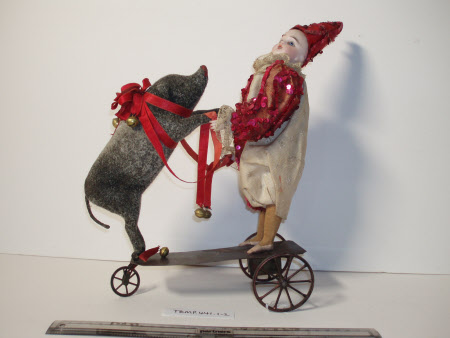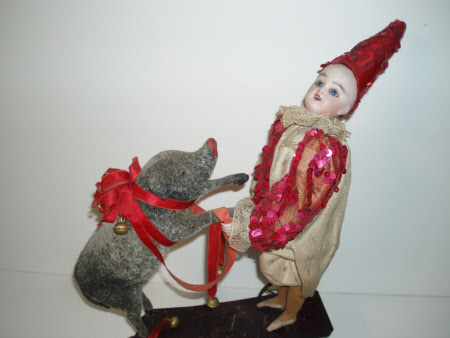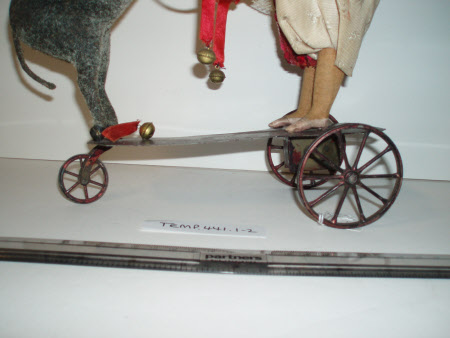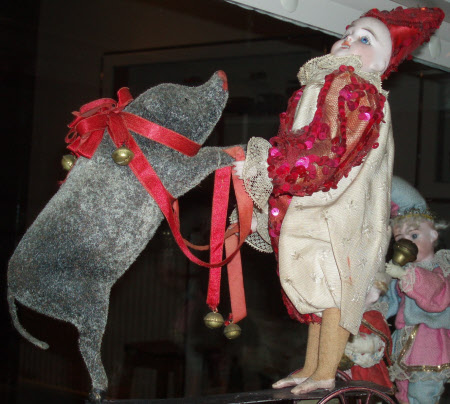Clockwork toy
Category
Toys
Date
circa 1900
Materials
Bisque, silk or satin, net, fibrous fabric and metal
Measurements
190 mm (length); 350 mm (height)
Place of origin
Germany
Order this imageCollection
Sudbury Hall Museum of Childhood, Derbyshire
NT 665199
Caption
Clockwork toys were first invented at the beginning of the 16th century but at that time they were only given as presents to Royalty. This charming clown and pig clockwork toy dates back to around 1900 when similar tin toys were being mass produced by European manufacturers. They were highly popular until the invention of the battery when sales declined drastically. In the late 1970s wind-up toys became popular again and were made from plastic.
Summary
A clockwork toy of a clown and pig which are standing on a wheeled rectangular base. It has one spoked front wheel and two spoked rear wheels, all losing red paint. Beneath the clown end of the rectangular base is the clockwork mechanism housed inside a rectangular box. The clown has a bisque head and hands with inset blue glass eyes. He has painted facial details and is wearing a conical red silk or satin hat covered in net and pink sequins. He wears a clown’s suit, one half of cream silk or satin, with the sleeve covered in net with pink sequins. The other half is net with pink sequins and a cream silk or satin sleeve. He has a cream lace ruff and cuffs. On his legs are fine knitted light brown stockings and faded pink satin or silk shoes. The left hand of the doll is attached to the front legs of the dancing pig, which stands on it's hind legs. The pig is moulded and is covered in a grey and black fibrous fabric. It has a painted red nose and black painted trotters. Around the pig's neck is a satin red ribbon rosette and ribbon 'bridle' with four gold-coloured metal bells attached. A small piece of red ribbon with another bell attached is loose from the object. The clown's feet are slotted onto the rectangular base and the corresponding clockwork mechanism. Total number of items is 2.



